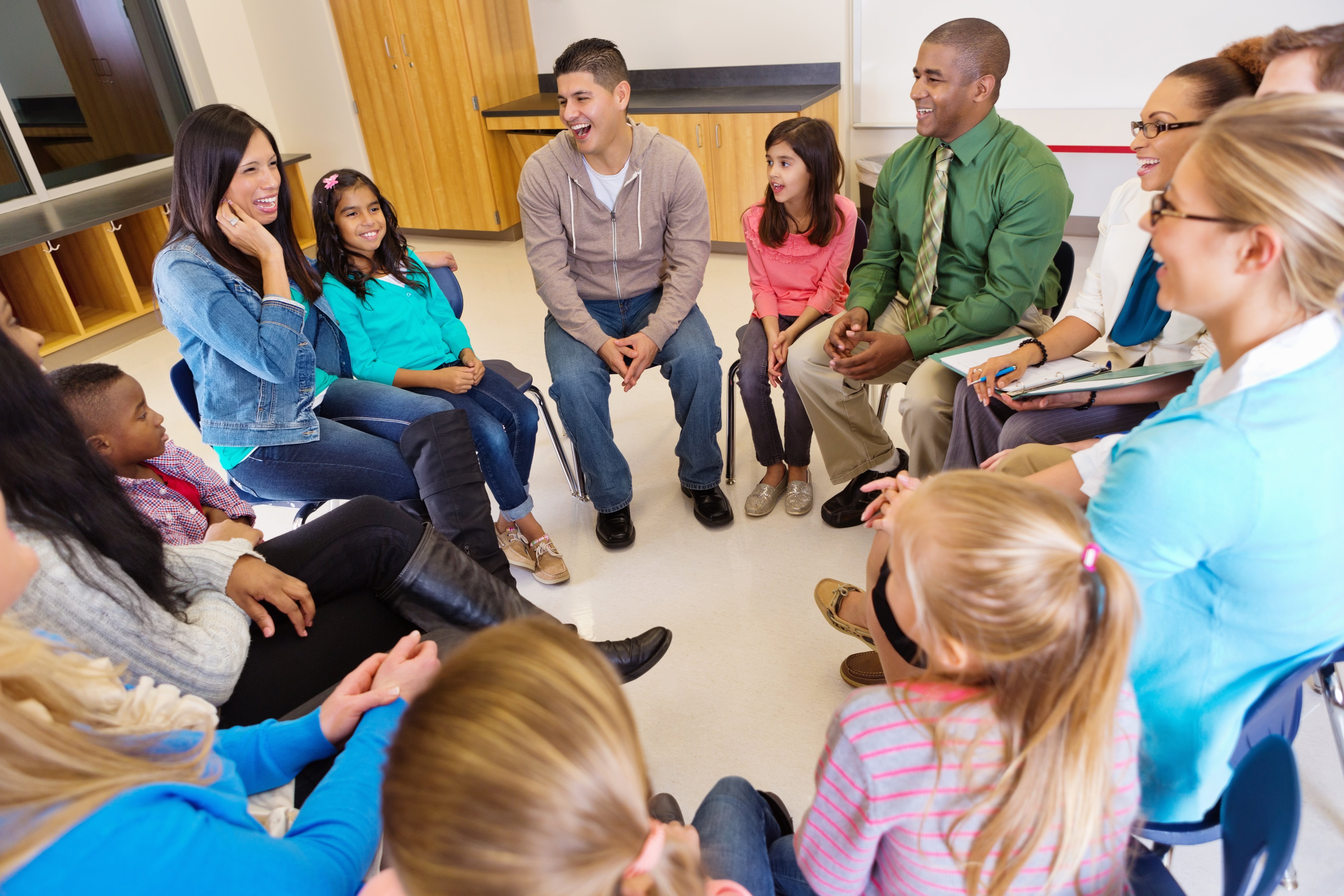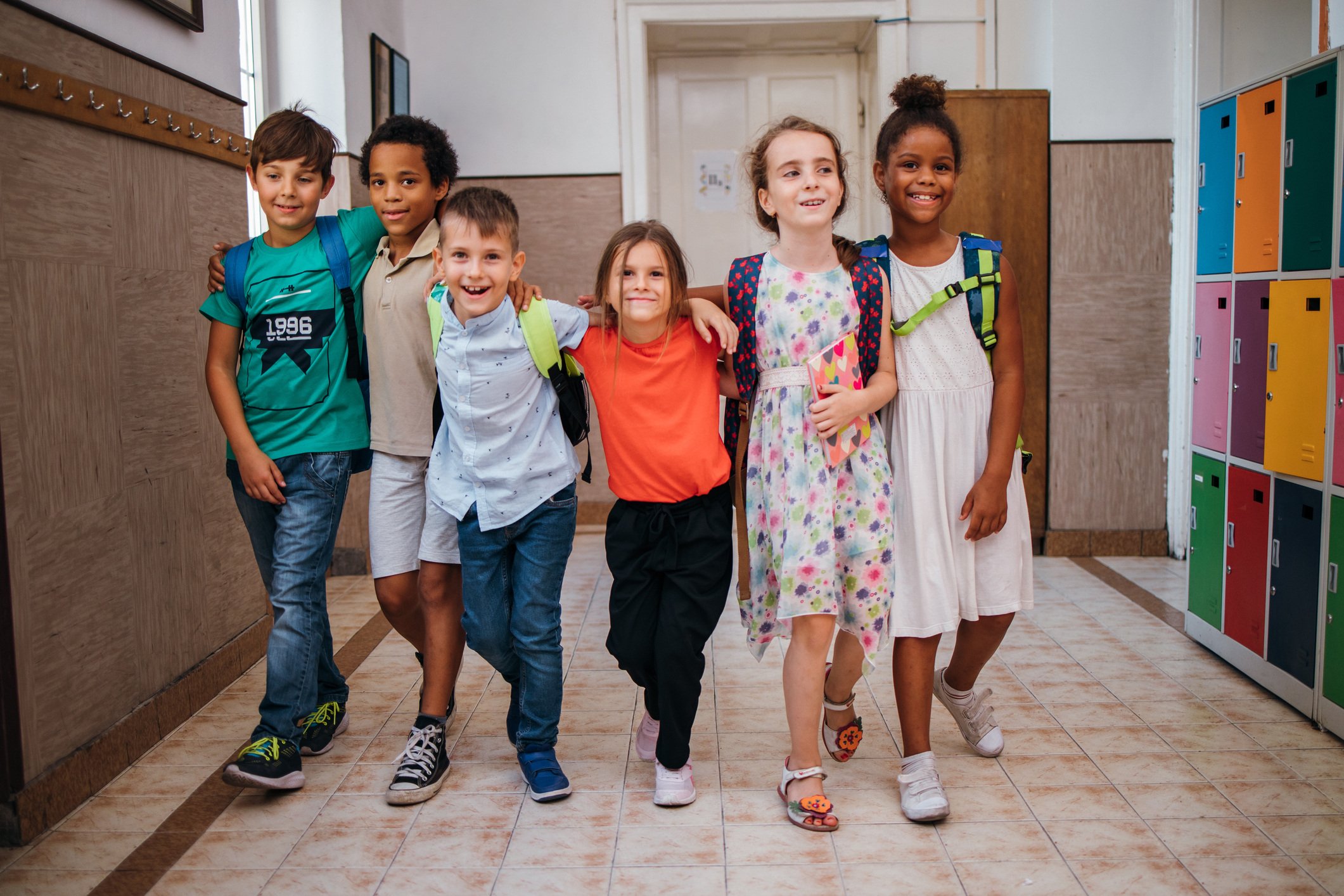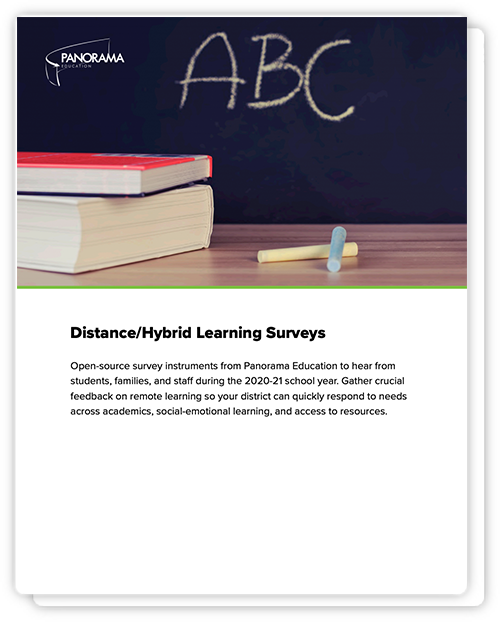Today, researchers and education leaders consider school climate a key lever for fostering safe, supportive communities in K-12.
An extensive body of research shows that school climate has a significant impact on student well-being, emotional, and mental health outcomes. A positive school climate is linked to better academic performance, lower rates of bullying, psychological well-being in early adolescence, improved self-esteem in middle school students, lower levels of drug use among high school students, and greater job satisfaction for teachers.
However, nurturing a positive school climate looks slightly different this academic year. Over 50 percent of districts are still engaged in hybrid (or fully remote) learning in 2020-21. Physical interactions are harder to come by during a school year filled with distancing, alternating schedules, and shutdowns.
How can school and district leaders build a positive school climate when learning happens online?
In this post, we’ll explore the definition of school climate and three best practices for nurturing a safe, supportive, and inclusive school climate in a virtual environment.
Download Panorama's Remote Learning Surveys to gather 360° feedback on your virtual school climate.
What Is School Climate?
School climate refers to the quality and character of school life. According to the National School Climate Council, it is based on student, parent, and school personnel experiences of school life and reflects the norms, goals, values, interpersonal relationships, teaching and learning practices, and organizational structures of a school.
Indicators and staples of a positive school climate include:
- A high level of respect between students and teachers
- A high degree of psychological and physical safety
- Norms that support individuals feeling socially and emotionally safe
- Continuous improvement processes to evaluate and iterate on policies and programs
- A shared school vision among caregivers, staff, educators, and students
School climate is often used interchangeably with school culture and school community. While the three terms are related, it’s important to understand how they differ:
- School culture refers to the values, shared beliefs, and behavior of the various stakeholders within a school community. It reflects the school community’s social norms, everyday interactions, and routines. The school culture defines the climate experienced by those in the school community. At the district level, culture includes the experience in the administrative offices, human resources, maintenance, transportation, special services, or any other organizational unit.
- School community refers to all entities that support the activities of the school. Beyond students, teachers, non-instructional staff, and administrators who are active in school buildings, this includes caregivers, volunteers, district-level administrators, paraprofessionals, school board members, and community-serving organizations that work with schools.
How to Foster a Positive School Climate During Hybrid or Remote Learning
1. Gather and act on continuous feedback from your students, families, and school staff.
As we know, school climate is based on the perspectives of students, parents, and school personnel. It is critical to understand and address the needs of these stakeholders during a uniquely stressful and uncertain school year, asking questions like:
- How engaged are students in their online courses? How are they coping with limited in-person interactions with peers and teachers?
- What supports do educators need to deliver high-quality content? What are their perceptions of the learning environment in a hybrid model?
- How are caregivers faring in this time? What are their greatest areas of need? What feedback or questions do they have about their students’ learning?
- How are different groups in our school community experiencing school right now? Which parts of our system may be helping or harming certain groups of students and families?
Panorama's Distance/Remote Learning Surveys are a great way to measure school climate virtually, identify students’ social, emotional, and academic needs, and deliver targeted supports to families, teachers, and staff. With Panorama, schools and districts can easily disaggregate feedback data from students, families, and staff to understand if the virtual school climate is inclusive and inviting to every member of the community.
Learn how the New York City Department of Education is partnering with Panorama to gather and act on stakeholder feedback during remote learning.
2. Create safe, consistent routines for students during the school day.
When it comes to building a positive school climate remotely, it’s not about reinventing the wheel. Instead, think about the in-person programs and rituals that worked well—and how to adapt them for virtual use.
Routines create predictability so that students know what to expect. Safe, consistent, and reliable supports during the school day can assist learning recovery efforts while building resilience and social-emotional safety for all members of our school communities.
Consider the ideas below to help strengthen relationships, create a supportive and responsive learning climate, and allow students to express themselves as individual learners.
- Create community norms for remote learning. Ask students to reflect on their experiences with distance learning and discuss observable behaviors that help them feel happier, more engaged, and more comfortable.
- Establish recurring rituals and routines such as online morning announcements, journaling, weekly email or video newsletters, or office hours.
- Carve out time to regularly check-in with students. Use breakout rooms, one-on-one virtual meetings, or an online “temperature check” form to routinely ask how students are feeling and who they may need support from.
- Create opportunities for students to work collaboratively and be “together" virtually. Group projects, online breakout rooms, and virtual field trips can give students some of the social stimulation they may be missing.
- Clarify counselor roles and responsibilities during remote learning to provide clear guidelines for staff and create pathways for students to reach out for help.
3. Prioritize adult well-being by providing social and emotional supports for educators.
The well-being of teachers and staff is not a novel issue, but the pandemic has exposed and exacerbated stress and anxiety among educators.
Adults can’t pour from an empty glass. At a time when educators and staff are being asked to do more than ever before, district leaders must commit to building adult capacity and providing spaces for adults to practice self-care. Supporting adult SEL must be a priority when it comes to maintaining a positive school climate.
Here are a few resources to help you nurture a work environment in which staff feel supported, cared for, and empowered:
- Adult SEL Toolkit for 2020-21: Resources, templates, and materials for supporting educator well-being and social-emotional capacity.
- Teacher/Staff Well-Being Survey: A research-backed survey to measure and support teacher well-being, social-emotional learning, and job satisfaction.
- How to Lead Adult SEL: 4 Experts Share Best Practices: District administrators share how they're
- Mindfulness Toolkit for District Leaders: Our top resources for developing a mindfulness practice and modeling mindfulness for staff and students.







